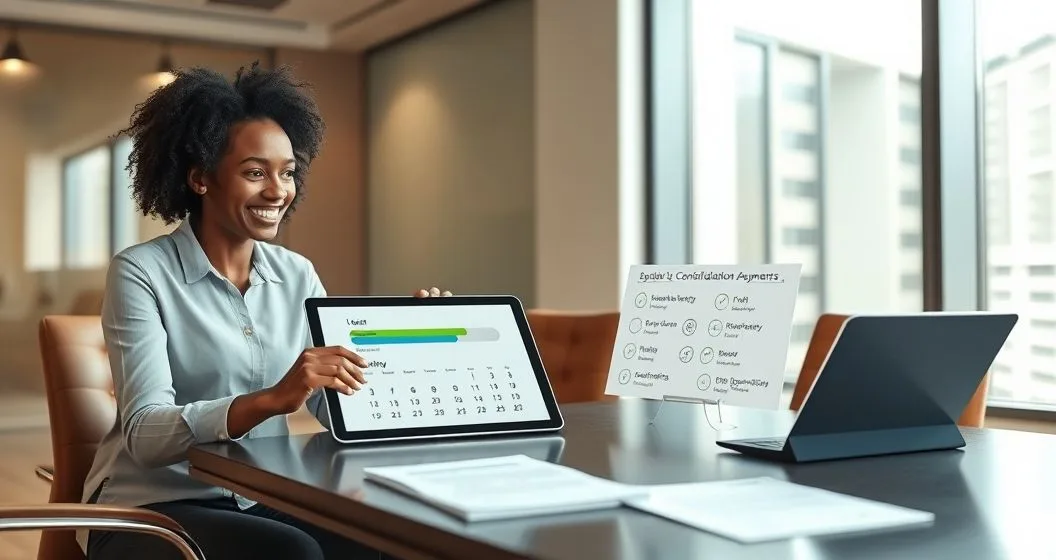Overview
Income-driven repayment (IDR) plans adjust monthly federal student loan payments to a percentage of your discretionary income and can extend repayment timelines. That structure matters because it changes the amount you pay today, how many payments qualify toward forgiveness, and whether your loans and payments meet the rules for programs such as Public Service Loan Forgiveness (PSLF) or IDR forgiveness (the loan balance forgiven after 20–25 years of qualifying payments).
How IDR plans affect forgiveness eligibility
-
Qualifying payments and counting: For PSLF, only payments made under an IDR plan (or other qualifying repayment plans) while working full-time for a qualifying employer count toward the 120 payments required. For IDR forgiveness (non-PSLF), continuing on an IDR plan is usually a prerequisite for having any remaining balance forgiven after the statutory period (typically 20–25 years) (U.S. Dept. of Education).
-
Loan type and consolidation: Only Direct Loans qualify for PSLF. If you have FFEL or Perkins loans, you must consolidate them into a Direct Consolidation Loan to make those payments count. Consolidation can reset some timelines, so plan carefully and confirm with your servicer (studentaid.gov/forgiveness-cancellation/public-service).
-
Plan choice matters: Different IDR plans calculate payments differently and may affect how quickly you reach forgiveness. The federal SAVE plan (implemented in 2024) and existing IDR options change payment amounts and forgiveness timelines for many borrowers; always check current rules on studentaid.gov/repay-loans/understanding/plans/income-driven.
-
Income recertification and income changes: You must recertify income annually. If you fail to recertify, your payment can increase and your progress toward forgiveness can be interrupted. Income increases can raise monthly payments and lengthen the time to forgiveness; income dips can lower payments and preserve more discretionary cash flow.
Practical implications and common pitfalls
-
Don’t assume ‘‘automatic’’ forgiveness: You must document qualifying payments and apply where required. For PSLF, submit the Employment Certification Form annually to track progress (U.S. Dept. of Education).
-
Watch consolidation timing: Consolidating to access PSLF or a better IDR option can change which payments count and when your forgiveness clock starts. Check with your loan servicer first.
-
Private loans and forgiveness: Private student loans do not qualify for federal IDR plans or PSLF.
-
Documentation and employer certification: Keep proof of employment, paystubs, and annual certification forms. In my practice I’ve seen borrowers lose qualifying months by failing to certify employment or to use the correct loan type (Direct Loans). To reduce that risk, certify annually and after any employer change.
Quick action checklist
- Confirm loan type (Direct vs. FFEL/Perkins). If needed, consider Direct Consolidation—but understand the timing effect.
- Enroll in the IDR plan that best fits your income and goals; review the federal SAVE plan options at studentaid.gov.
- Certify employment annually for PSLF using the Department of Education’s form and submit it to your servicer. See our PSLF certification guide for step-by-step help.
- Re-certify income each year and update your servicer with major income or family-size changes.
- Keep a folder (digital or paper) of payment records, certification forms, and servicer communications.
Real-world example (brief)
A teacher I worked with enrolled in an income-driven plan and certified her school district employment each year. After consolidating a prior FFEL loan into a Direct Consolidation Loan and counting 120 qualifying payments, she successfully received PSLF. The keys were consolidation where necessary, annual employer certification, and consistent income recertification.
Where to get authoritative information
- U.S. Department of Education — Income-Driven Repayment Plans: https://studentaid.gov/repay-loans/understanding/plans/income-driven
- U.S. Department of Education — Public Service Loan Forgiveness: https://studentaid.gov/repay-loans/forgiveness-cancellation/public-service
Related FinHelp resources
- PSLF certification steps: Public Service Loan Forgiveness: Steps to Certify Employment Correctly — https://finhelp.io/glossary/public-service-loan-forgiveness-steps-to-certify-employment-correctly/
- PSLF documentation checklist: Public Service Loan Forgiveness: Documentation Checklist for Eligible Employees — https://finhelp.io/glossary/public-service-loan-forgiveness-documentation-checklist-for-eligible-employees/
Professional note and disclaimer
In my practice helping clients with student loan strategy, I prioritize verifying loan type, choosing the IDR plan that reduces undue hardship while preserving qualifying payments, and keeping meticulous documentation. This article is educational only and not a substitute for personalized advice. For individualized guidance, contact a qualified financial counselor or your loan servicer.



